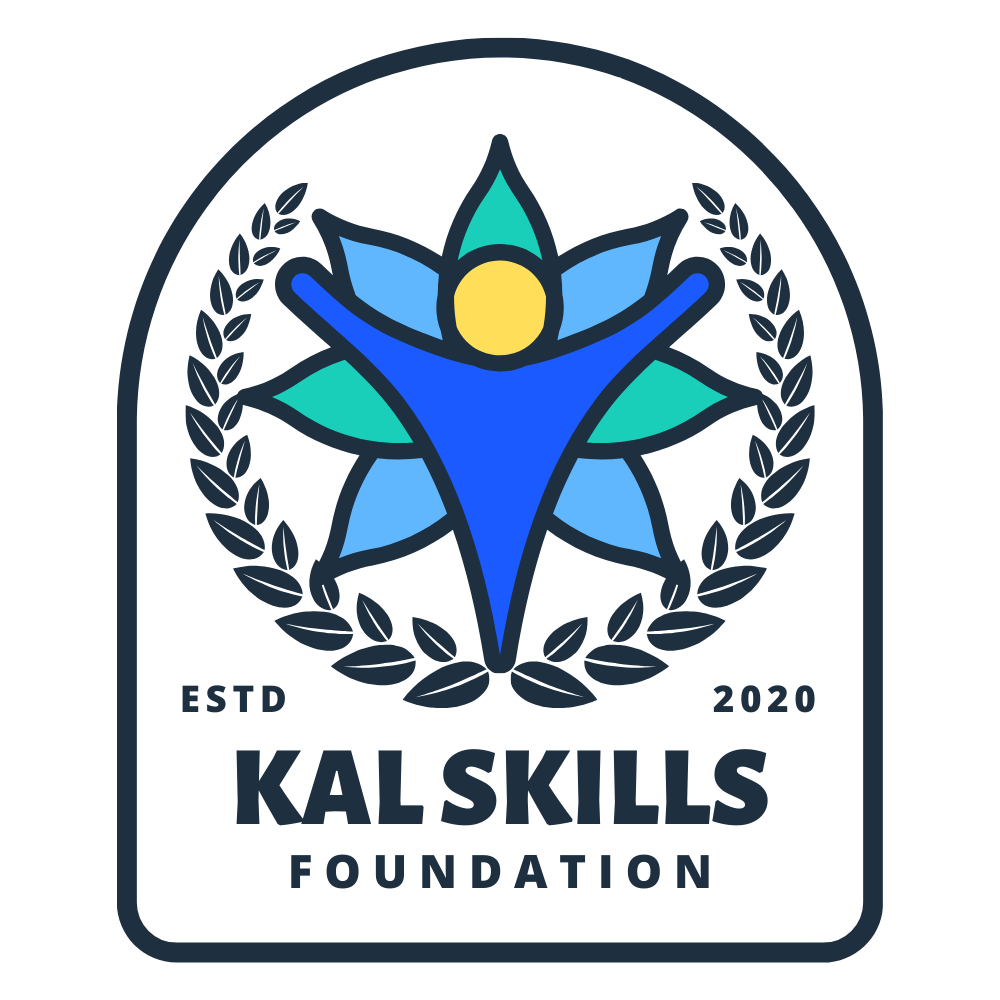In today’s fast-paced business world, employee well-being is key to success. Companies are now focusing on keeping their employees happy and healthy. This is because happy employees are more productive and loyal.
But what makes a wellness program truly successful? It’s about creating a program that meets the needs of today’s workers. This means looking at all aspects of well-being, not just physical health.
Want to know how to make your workplace a healthier place? Learn the strategies and best practices that are changing workplaces around the world. These changes are making workplaces better places for everyone.
Key Takeaways
- Understand the business case for investing in employee wellness programs
- Explore the impact of workplace wellness on employee productivity and engagement
- Identify the essential components of successful workplace wellbeing initiatives
- Discover strategies for integrating mental health support and physical fitness activities
- Learn how to create a work-life balance culture and promote healthy work environments
Understanding the Importance of Employee Wellness Initiatives
It’s key for companies to have occupational health programs and workplace health interventions. These help create a healthy and productive team. They also help the business succeed.
The Business Case for Workplace Health
Workplace health and wellness programs are good for a company’s wallet. Research shows they cut down on sick days, lower health costs, and boost morale. This all adds up to a good return on investment (ROI).
Impact on Employee Productivity
Healthy employees are more productive. Programs like stress management and fitness facilities help. They let employees stay focused and do their best work.
ROI of Wellness Programs
| Metric | Improvement |
|---|---|
| Absenteeism | 27% reduction |
| Healthcare Costs | 26% decrease |
| Productivity | 32% increase |
These numbers show the big return on investment from good health programs. They’re a smart part of any company’s wellness plan.
“Investing in employee wellness is not only the right thing to do, but it also makes good business sense. Healthier, happier employees are more engaged, productive, and committed to the organization’s success.”
Key Components of Successful Workplace Wellbeing Programs
Creating a good workplace wellbeing program needs a mix of things. It includes employee assistance programs, work-life balance initiatives, and stress management programs. These parts work together to meet the needs of workers and build a wellness culture.
Employee Assistance Programs (EAPs)
Employee assistance programs are key in supporting employees. They offer confidential help, referrals, and resources for many issues. This support helps employees stay well, leading to better work and happiness.
Work-Life Balance Initiatives
Good wellbeing programs also focus on work-life balance initiatives. They might offer flexible hours, remote work, and time off for personal needs. This helps employees balance work and life, making them more engaged and loyal.
Stress Management Programs
Stress management programs are also vital. They teach mindfulness, relaxation, and time management. These tools help employees deal with work and life pressures. This support boosts their mental health, leading to better work and happiness.
| Component | Description | Benefits |
|---|---|---|
| Employee Assistance Programs (EAPs) | Confidential counseling and resources for personal and professional issues | Improved employee well-being, productivity, and job satisfaction |
| Work-Life Balance Initiatives | Flexible scheduling, remote work options, and paid time off for personal commitments | Engaged and loyal workforce, enhanced work-life balance |
| Stress Management Programs | Mindfulness training, relaxation techniques, and time management workshops | Improved mental and emotional well-being, enhanced performance and job satisfaction |
By adding these key parts to wellbeing programs, companies can support their employees’ health and happiness. This makes for a better work environment.

Implementing Mental Health Support in the Workplace
Workplace wellness is not just about physical health. Supporting employee mental health is just as important. Companies that focus on mental health create a culture of openness and empathy. This boosts productivity and keeps employees longer.
Here are some practical ways to support mental health at work.
Stress Management Techniques
Teaching employees how to manage stress is key to their well-being. Offer mindfulness workshops, yoga, or meditation to help them cope. Also, provide access to mental health professionals and employee assistance programs.
Anxiety and Depression Support
First, tackle the stigma around mental health. Teach managers to spot signs of anxiety and depression. Empower them to talk openly with their team.
Make sure employees can get help without fear. Offer on-site therapy or a mental health benefits package.
Creating Safe Spaces for Mental Health Discussions
Create a space where employees feel safe to share their struggles. Set up quiet rooms or wellness zones for relaxation and mental health talks. Encourage support groups and events to make mental health discussions normal.

Comprehensive mental health support programs empower employees. They boost morale and make teams more resilient and productive. Investing in mental health and mindfulness at work is vital for a thriving business.
Physical Wellness Activities and Fitness Incentives
Physical wellness activities and fitness incentives are key in a workplace wellbeing program. Employers who focus on these areas support their employees’ health. They also create a culture of wellness at work.
Organizing fitness challenges is a great way to encourage healthier lifestyles. These challenges can be anything from step-counting competitions to group exercise classes. They motivate workers to stay active. Offering prizes or rewards can make people more likely to join in and change their habits for the better.
Healthy eating incentives are also important in workplace wellness programs. Giving access to nutritious snacks or helping pay for healthy lunches can make a big difference. It can improve employees’ wellbeing and how well they work.
- Organize fitness challenges such as step-counting competitions or group exercise classes to encourage physical activity.
- Offer healthy eating incentives, such as subsidized healthy lunch options or rewards for maintaining a balanced diet.
- Promote a culture of wellness at work by making physical activity and healthy eating accessible and enjoyable for all employees.

By adding physical wellness activities and fitness incentives to their wellbeing programs, employers help their employees live healthier lives. This leads to better productivity and success for the organization.
Creating an Effective Work-Life Balance Strategy
In today’s fast-paced world, finding a good work-life balance is key for employee happiness and success. Companies that care about their workers’ wellbeing know how vital it is to have strategies for a balanced life. They help employees mix work and personal life smoothly.
Flexible Working Arrangements
Flexible work options are a big part of a good work-life balance plan. This can mean working from home, flexible hours, or shorter weeks. Giving employees control over their time and where they work helps them do their best while taking care of personal stuff.
Time Management Solutions
Companies should also teach employees how to manage their time well. This includes learning to set priorities, handle tasks, and communicate effectively. Training on stress management is especially important for a healthy work-life balance.
Personal Development Opportunities
Supporting employees’ personal growth is also important. This can include wellness programs, mentorship, and courses for personal growth. By focusing on the whole person, companies can create a culture that values work-life balance and improves overall wellbeing.
| Flexible Working Arrangements | Time Management Solutions | Personal Development Opportunities |
|---|---|---|
| Remote work | Time management workshops | Wellness programs |
| Flexible schedules | Prioritization techniques | Mentorship schemes |
| Compressed workweeks | Effective communication strategies | Personal enrichment courses |

“Achieving a healthy work-life balance is not about getting everything done, but about getting the right things done.”
Developing Corporate Health Promotion Initiatives
Companies are now focusing on making their workplaces healthier and more productive. They use corporate wellness strategies to improve overall wellness. This benefits both employees and the company.
To create effective health promotion, a mix of strategies is needed. Successful programs include:
- Targeted education and awareness campaigns to encourage healthy behaviors
- On-site fitness facilities or subsidized gym memberships to promote physical activity
- Stress management workshops and mental health support services
- Healthy eating options in the workplace cafeteria or vending machines
- Incentives and rewards for employees who actively participate in wellness activities
By using these corporate wellness strategies, companies can create a healthier work environment. This leads to better employee engagement, less absenteeism, and a stronger company.
| Key Benefits of Corporate Health Promotion Initiatives | Potential Outcomes |
|---|---|
| Increased employee productivity | Improved work performance and output |
| Reduced healthcare costs | Lower employee insurance premiums and medical expenses |
| Enhanced employee recruitment and retention | Attracting and retaining top talent |
| Improved workplace morale and job satisfaction | Increased employee engagement and commitment |
By implementing workplace health interventions and promoting organizational wellness, companies can unlock their employees’ full potential.

“A healthy employee is a happy and productive employee. Investing in corporate wellness initiatives is not just a smart business move, but a moral imperative for any organization that values its people.”
Designing Ergonomic and Healthy Workspaces
Making a workspace ergonomic and wellness-focused is key for employee success and health. Ergonomic design is vital in occupational health programs. It creates a healthier work place through smart interventions.
Office Layout Optimization
A good office layout boosts employee comfort and work efficiency. Using adjustable workstations, plenty of natural light, and smart equipment placement helps avoid physical strain. It also promotes better posture. Ergonomic design in offices improves health and job satisfaction.
Equipment and Furniture Selection
The type of office equipment and furniture affects employee health. Choosing adjustable chairs, standing desks, and ergonomic keyboards lowers the risk of musculoskeletal disorders. By picking the right tools, companies can focus on employee health and comfort. This boosts the success of health programs at work.
Environmental Wellness Factors
The workspace environment is also key for employee well-being. Air quality, temperature, and noise levels greatly affect productivity and mental health. Adding wellness initiatives like better air filters or sound-absorbing materials makes the work place healthier and more productive.
| Design Element | Ergonomic Benefit | Impact on Occupational Health |
|---|---|---|
| Adjustable Workstations | Reduced physical strain, improved posture | Decreased risk of musculoskeletal disorders |
| Ergonomic Chairs and Keyboards | Enhanced comfort and support for prolonged use | Minimized risk of repetitive strain injuries |
| Optimal Lighting and Air Quality | Reduced eye strain and improved respiratory health | Increased employee well-being and productivity |
“Investing in ergonomic workplace design is not just about aesthetics; it’s a strategic investment in the health and well-being of our employees, which ultimately drives organizational success.”
Nutrition and Healthy Eating Programs
Encouraging healthy eating is key to a good workplace wellness program. Good nutrition boosts employee productivity, energy, and overall health.
Employers can offer healthy eating incentives to help staff eat better. These might include cheaper healthy meals, gym membership paybacks, or rewards for nutrition goals.
Financial perks aren’t the only way to promote health. Corporate health promotion can also include education on healthy eating, cooking demos, and healthy snacks. This empowers employees to choose better foods, creating a wellness culture that goes beyond work.
| Healthy Eating Incentives | Benefits |
|---|---|
| Subsidized healthy meals | Promotes balanced nutrition and reduces the reliance on unhealthy fast food options |
| Gym membership reimbursements | Encourages employees to adopt a holistic approach to health and wellness |
| Nutrition-related rewards | Motivates employees to set and achieve specific health and wellness goals |
“A healthy workforce is a productive workforce. By investing in nutrition and healthy eating programs, employers can unlock the full potential of their employees and drive lasting success.”
Measuring the Success of Wellness Programs
It’s key to check if workplace wellbeing programs are working well. By using strong Key Performance Indicators (KPIs) and getting feedback from employees, companies can see how their wellness plans are doing.
Key Performance Indicators
Choosing the right KPIs helps show how well workplace wellbeing programs are doing. Important metrics include:
- Absenteeism and sick leave rates
- Employee engagement and satisfaction levels
- Productivity and output measures
- Healthcare cost savings and return on investment (ROI)
- Participation rates in wellness activities
Employee Feedback Systems
Getting regular feedback from employees is crucial. It helps understand how much value they see in workplace wellbeing programs. Using surveys, focus groups, and suggestion boxes can give insights on what to improve and what employees like.
Program Adjustment Strategies
By looking at KPIs and feedback, companies can make smart changes to their wellness programs. This might mean tweaking what programs offer, how they communicate, or what rewards they give. The goal is to meet the needs of employees better and improve wellness and performance.
| Key Performance Indicator | Metric | Benchmark |
|---|---|---|
| Absenteeism | Sick leave days per employee per year | 8-10 days |
| Employee Engagement | Employee Net Promoter Score (eNPS) | 30-50 |
| Healthcare Costs | Annual healthcare expenses per employee | $6,000-$8,000 |
| Wellness Program Participation | Percentage of employees enrolled in at least one wellness activity | 60-80% |
By using a detailed method to measure workplace wellbeing program success, companies can make their wellness efforts better. This leads to lasting improvements in how well the company does overall.
Building a Culture of Workplace Wellness
Creating a workplace wellness culture is key for companies to care for their employees’ well-being. By making wellness a core part of their operations, businesses can create a supportive environment. This environment promotes mental health and meets employees’ overall needs.
One good way is to link wellness efforts with the company’s mission and values. This makes wellness a vital part of the company’s identity, not just an extra. Leaders can lead by example, showing the value of self-care. They can also encourage employees to take charge of their wellness.
It’s also important to talk openly about mental health. By making it safe for employees to share their feelings and get help, companies can help break down barriers. This creates a supportive space where everyone can thrive.
| Strategies for Building a Wellness Culture | Benefits |
|---|---|
| Integrate wellness into the company’s core values and daily operations | Fosters a holistic, employee-centric approach to wellbeing |
| Encourage leadership to role-model healthy behaviors | Enhances organizational buy-in and commitment to wellness |
| Facilitate open dialogues around mental health and wellbeing | Destigmatizes conversations and promotes a supportive environment |
By focusing on workplace wellness, companies can unlock their employees’ full potential. This boosts happiness and makes them more attractive to top talent. It shows they value a supportive and caring work environment.
“Investing in employee wellness is not just a cost-saving measure – it’s a strategic imperative that can transform an organization’s culture and drive long-term success.”
Technology Integration in Wellness Programs
Workplace wellness programs are getting a tech boost. Digital platforms, health trackers, and virtual activities are changing how employers help employees. They support employee assistance programs, workplace health interventions, and mindfulness at work.
Digital Wellness Platforms
Digital wellness platforms are a one-stop shop for employees. They offer health assessments, fitness classes, mindfulness exercises, and mental health tools. This makes it easy for employees to get involved in wellness.
Health Tracking Tools
Wearable devices and apps are changing how we track health. They monitor steps, sleep, heart rate, and stress. This lets employees manage their health better. Employers can use this data to help employees stay healthy.
Virtual Wellness Activities
The pandemic made remote wellness programs essential. Employers now offer virtual yoga, meditation, cooking classes, and team activities. These mindfulness at work programs help employees stay well from home.
Technology makes wellness programs better. They are more accessible, engaging, and data-driven. This leads to happier, healthier employees and a stronger company culture.
| Feature | Benefits |
|---|---|
| Digital Wellness Platforms | Centralized access to wellness resources, personalized assessments, and virtual fitness classes |
| Health Tracking Tools | Personalized insights, data-driven interventions, and enhanced employee engagement |
| Virtual Wellness Activities | Flexible, remote-friendly wellness initiatives that promote work-life balance and mindfulness |
Legal Considerations and Compliance
Implementing occupational health programs, workplace wellbeing programs, and employee mental health initiatives comes with legal hurdles. Employers must follow laws and protect their employees’ rights and privacy.
In today’s digital world, data privacy is key. Companies must follow laws like GDPR and HIPAA when handling employee health data. They need to manage data securely and be open about how it’s used to build trust and avoid legal trouble.
It’s also important to avoid discrimination in wellness programs. These programs should not favor or disfavor employees based on health, disability, age, or other protected traits. Legal advice is crucial to ensure these programs are fair and meet ADA and GINA standards.
| Legal Consideration | Key Compliance Requirement |
|---|---|
| Data Privacy | Adherence to GDPR, HIPAA, and other data protection regulations |
| Nondiscrimination | Compliance with ADA, GINA, and other anti-discrimination laws |
| Occupational Health Regulations | Alignment with OSHA standards and industry-specific requirements |
Companies must also follow occupational health laws, like those from OSHA. This means dealing with workplace dangers, keeping the work area safe, and helping employees with physical and mental health issues.
By focusing on legal aspects and staying compliant, employers can make occupational health programs and workplace wellbeing programs that help employees and protect the company from legal problems.
Budget Planning and Resource Allocation
Creating successful workplace wellbeing programs needs careful budget planning and resource use. By choosing cost-effective solutions, companies can make their wellness efforts more impactful. This way, they can stay financially stable.
Cost-Effective Program Solutions
Finding and using affordable program solutions is key for companies wanting to support employee wellness. They might look at free or low-cost digital wellness tools, partner with local groups, or focus on the most effective initiatives. This approach helps them get the most value from their investment.
Resource Management Strategies
Managing resources well is vital for the success of workplace wellbeing programs. It means using staff, facilities, and equipment wisely to deliver wellness services efficiently. Regularly checking and adjusting how resources are used helps companies meet changing needs and stay within budget.
Investment Planning
Investing wisely in workplace wellness can bring big benefits for both employees and the company. By planning for long-term investments in preventive healthcare, employee education, and program improvements, companies can lay a solid foundation. This supports sustainable corporate and organizational wellness efforts.





